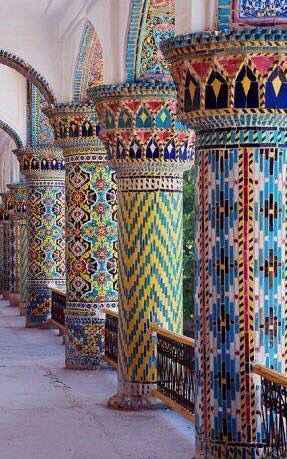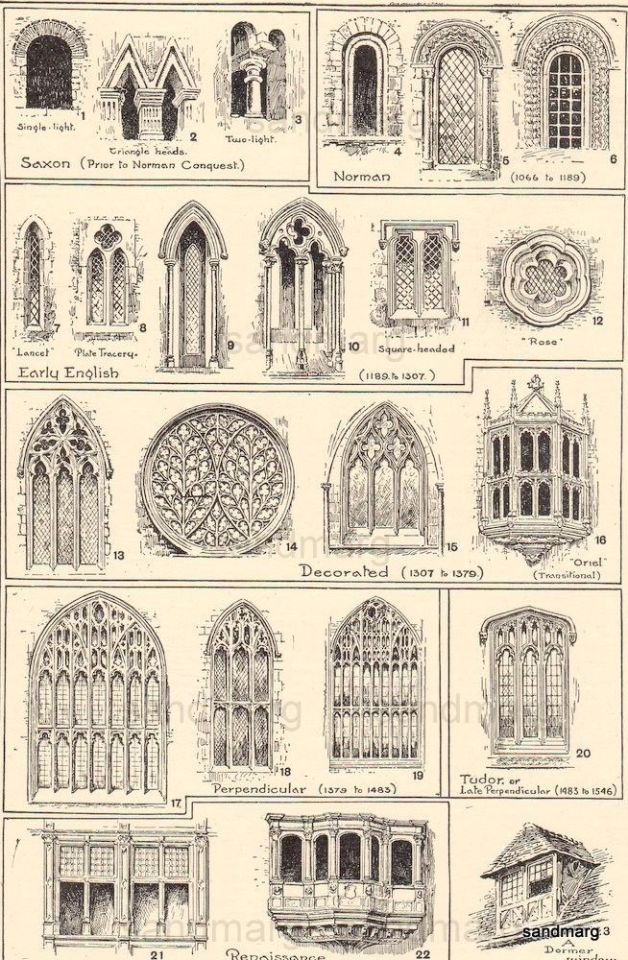Don't wanna be here? Send us removal request.
Text
Amulet of the Heavenly Chorus
A homebrew magic item

142 notes
·
View notes
Photo

Download is here
Hi res, lineart, gridless, and psd docs are available to patrons on my patreon.
Whether you’ve the time to stop in for a cup of coffee and a pastry, or simply visit the trot-thru window, the Sword and Scone is always worth a visit for weary adventurers, and a pleasant rest stop for those that may prefer a more peaceful alternative to spending their hard-won coin than by emptying the kegs of every tavern in town.
Instagram
204 notes
·
View notes
Text
Begin your villain’s evil monologue by having them stop to thank their sponsor, Blue Apron…
21K notes
·
View notes
Text
Fantasy Guide to Architecture






This post has been waiting on the back burner for weeks and during this time of quarantine, I have decided to tackle it. This is probably the longest post I have ever done. I is very tired and hope that I have covered everything from Ancient times to the 19th Century, that will help you guys with your worldbuilding.
Materials
What you build with can be determined by the project you intend, the terrain you build on and the availability of the material. It is one characteristic that we writers can take some some liberties with.
Granite: Granite is an stone formed of Igneous activity near a fissure of the earth or a volcano. Granites come in a wide range of colour, most commonly white, pink, or grey depending on the minerals present. Granite is hard and a durable material to build with. It can be built with without being smoothed but it looks bitchin' and shiny all polished up.
Marble: Probably everyone's go to materials for building grand palaces and temples. Marble is formed when great pressure is placed on limestone. Marble can be easily damaged over time by rain as the calcium in the rock dissolves with the chemicals found in rain. Marble comes in blue, white, green, black, white, red, gray and yellow. Marble is an expensive material to build with, highly sought after for the most important buildings. Marble is easy to carve and shape and polishes to a high gleam. Marble is found at converging plate boundaries.
Obsidian: Obsidian is probably one of the most popular stones mentioned in fantasy works. Obsidian is an igneous rock formed of lava cooling quickly on the earth's surfaces. Obsidian is a very brittle and shiny stone, easy to polish but not quite a good building material but a decorative one.
Limestone: Limestone is made of fragments of marine fossils. Limestone is one of the oldest building materials. Limestone is an easy material to shape but it is easily eroded by rain which leads most limestone monuments looking weathered.
Concrete: Concrete has been around since the Romans. Concrete is formed when aggregate (crushed limstone, gravel or granite mixed with fine dust and sand) is mixed with water. Concrete can be poured into the desired shape making it a cheap and easy building material.
Brick: Brick was one of history's most expensive materials because they took so long to make. Bricks were formed of clay, soil, sand, and lime or concrete and joined together with mortar. The facade of Hampton Court Palace is all of red brick, a statement of wealth in the times.
Glass: Glass is formed of sand heated until it hardens. Glass is an expensive material and for many years, glass could not be found in most buildings as having glass made was very expensive.
Plaster: Plaster is made from gypsum and lime mixed with water. It was used for decoration purposes and to seal walls. A little known fact, children. Castle walls were likely painted with plaster or white render on the interior.
Wattle and Daub: Wattle and daub is a building material formed of woven sticks cemented with a mixture of mud, one of the most common and popular materials throughout time.
Building terms
Arcade: An arcade is a row of arches, supported by columns.
Arch: An arch is a curved feature built to support weight often used for a window or doorway.
Mosaic: Mosaics are a design element that involves using pieces of coloured glass and fitted them together upon the floor or wall to form images.
Frescos: A design element of painting images upon wet plaster.
Buttress: A structure built to reinforce and support a wall.
Column: A column is a pillar of stone or wood built to support a ceiling. We will see more of columns later on.
Eave: Eaves are the edges of overhanging roofs built to allow eater to run off.
Vaulted Ceiling: The vaulted ceilings is a self-supporting arched ceiling, than spans over a chamber or a corridor.
Colonnade: A colonnade is a row of columns joined the entablature.
Entablature: a succession of bands laying atop the tops of columns.
Bay Window: The Bay Window is a window projecting outward from a building.
Courtyard/ Atrium/ Court: The courtyard is an open area surrounded by buildings on all sides
Dome: The dome resembles a hollow half of a sphere set atop walls as a ceiling.
Façade: the exterior side of a building
Gable: The gable is a triangular part of a roof when two intersecting roof slabs meet in the middle.
Hyphen: The hyphen is a smaller building connecting between two larger structures.
Now, let's look at some historical building styles and their characteristics of each Architectural movement.
Classical Style
The classical style of Architecture cannot be grouped into just one period. We have five: Doric (Greek), Ionic (Greek), Corinthian (Greek), Tuscan (Roman) and Composite (Mixed).
Doric: Doric is the oldest of the orders and some argue it is the simplest. The columns of this style are set close together, without bases and carved with concave curves called flutes. The capitals (the top of the column) are plain often built with a curve at the base called an echinus and are topped by a square at the apex called an abacus. The entablature is marked by frieze of vertical channels/triglyphs. In between the channels would be detail of carved marble. The Parthenon in Athens is your best example of Doric architecture.
Ionic: The Ionic style was used for smaller buildings and the interiors. The columns had twin volutes, scroll-like designs on its capital. Between these scrolls, there was a carved curve known as an egg and in this style the entablature is much narrower and the frieze is thick with carvings. The example of Ionic Architecture is the Temple to Athena Nike at the Athens Acropolis.
Corinthian: The Corinthian style has some similarities with the Ionic order, the bases, entablature and columns almost the same but the capital is more ornate its base, column, and entablature, but its capital is far more ornate, commonly carved with depictions of acanthus leaves. The style was more slender than the others on this list, used less for bearing weight but more for decoration. Corinthian style can be found along the top levels of the Colosseum in Rome.
Tuscan: The Tuscan order shares much with the Doric order, but the columns are un-fluted and smooth. The entablature is far simpler, formed without triglyphs or guttae. The columns are capped with round capitals.
Composite: This style is mixed. It features the volutes of the Ionic order and the capitals of the Corinthian order. The volutes are larger in these columns and often more ornate. The column's capital is rather plain. for the capital, with no consistent differences to that above or below the capital.
Islamic Architecture
Islamic architecture is the blanket term for the architectural styles of the buildings most associated with the eponymous faith. The style covers early Islamic times to the present day. Islamic Architecture has some influences from Mesopotamian, Roman, Byzantine, China and the Mongols.
Paradise garden: As gardens are an important symbol in Islam, they are very popular in most Islamic-style buildings. The paradise gardens are commonly symmetrical and often enclosed within walls. The most common style of garden is split into four rectangular with a pond or water feature at the very heart. Paradise gardens commonly have canals, fountains, ponds, pools and fruit trees as the presence of water and scent is essential to a paradise garden.
Sehan: The Sehan is a traditional courtyard. When built at a residence or any place not considered to be a religious site, the sehan is a private courtyard. The sehan will be full of flowering plants, water features snd likely surrounded by walls. The space offers shade, water and protection from summer heat. It was also an area where women might cast off their hijabs as the sehan was considered a private area and the hijab was not required. A sehan is also the term for a courtyard of a mosque. These courtyards would be surrounded by buildings on all sides, yet have no ceiling, leaving it open to the air. Sehans will feature a cleansing pool at the centre, set under a howz, a pavilion to protect the water. The courtyard is used for rituals but also a place of rest and gathering.
Hypostyle Hall: The Hypostyle is a hall, open to the sky and supported by columns leading to a reception hall off the main hall to the right.
Muqarnas : Muqarnas is a type of ornamentation within a dome or a half domed, sometimes called a "honeycomb", or "stalactite" vaulted ceiling. This would be cast from stone, wood, brick or stucco, used to ornament the inside of a dome or cupola. Muqarnas are used to create transitions between spaces, offering a buffer between the spaces.
African Architecture
African Architecture is a very mixed bag and more structurally different and impressive than Hollywood would have you believe. Far beyond the common depictions of primitive buildings, the African nations were among the giants of their time in architecture, no style quite the same as the last but just as breathtaking.
Somali architecture: The Somali were probably had one of Africa's most diverse and impressive architectural styles. Somali Architecture relies heavy on masonry, carving stone to shape the numerous forts, temples, mosques, royal residences, aqueducts and towers. Islamic architecture was the main inspiration for some of the details of the buildings. The Somali used sun-dried bricks, limestone and many other materials to form their impressive buildings, for example the burial monuments called taalo
Ashanti Architecture: The Ashanti style can be found in present day Ghana. The style incorporates walls of plaster formed of mud and designed with bright paint and buildings with a courtyard at the heart, not unlike another examples on this post. The Ashanti also formed their buildings of the favourite method of wattle and daub.
Afrikaner Architecture: This is probably one of the oddest architectural styles to see. Inspired by Dutch settlers (squatters), the buildings of the colony (planters/squatters) of South Africa took on a distinctive Dutch look but with an Afrikaner twist to it making it seem both familiar and strange at the same time.
Rwandan Architecture: The Rwandans commonly built of hardened clay with thatched roofs of dried grass or reeds. Mats of woven reeds carpeted the floors of royal abodes. These residences folded about a large public area known as a karubanda and were often so large that they became almost like a maze, connecting different chambers/huts of all kinds of uses be they residential or for other purposes.
Aksumite Architecture: The Aksumite was an Empire in modern day Ethiopia. The Aksumites created buildings from stone, hewn into place. One only has to look at the example of Bete Medhane Alem to see how imposing it was.
Yoruba Architecture: Yoruba Architecture was made by earth cured until it hardened enough to form into walls, or they used wattle and daub, roofed by timbers slats coated in woven grass or leaves. Each unit divided up parts of the buildings from facilities to residences, all with multiple entrances, connected together.
Igbo Architecture: The Igbo style follows some patterns of the Yoruba architecture, excepting that there are no connected walls and the spacing is not so equal. The closer a unit was to the centre, the more important inhabitants were.
Hausa architecture: Hausa Architecture was formed of monolithic walls coated in plaster. The ceilings and roof of the buildings were in the shape of small domes and early vaulted ceilings of stripped timber and laterite. Hausa Architecture features a single entrance into the building and circular walls.
Nubian Architecture: Nubia, in modern day Ethiopia, was home to the Nubians who were one of the world's most impressive architects at the beginning of the architecture world and probably would be more talked about if it weren't for the Egyptians building monuments only up the road. The Nubians were famous for building the speos, tall tower-like spires carved of stone. The Nubians used a variety of materials and skills to build, for example wattle and daub and mudbrick. The Kingdom of Kush, the people who took over the Nubian Empire was a fan of Egyptian works even if they didn't like them very much. The Kushites began building pyramid-like structures such at the sight of Gebel Barkal
Egyptian Architecture: The Egyptians were the winners of most impressive buildings for s good while. Due to the fact that Egypt was short on wood, Ancient Egyptians returned to building with limestone, granite, mudbrick, sandstone which were commonly painted with bright murals of the gods along with some helpful directions to Anubis's crib. The Egyptians are of course famous for their pyramids but lets not just sit on that bandwagon. Egyptian Architecture sported all kinds of features such as columns, piers, obelisks and carving buildings out of cliff faces as we see at Karnak. The Egyptians are cool because they mapped out their buildings in such a way to adhere to astrological movements meaning on special days if the calendar the temple or monuments were in the right place always. The Egyptians also only build residences on the east bank of the Nile River, for the opposite bank was meant for the dead. The columns of Egyptian where thicker, more bulbous and often had capitals shaped like bundles of papyrus reeds.
Chinese Architecture
Chinese Architecture is probably one of the most recognisable styles in the world. The grandness of Chinese Architecture is imposing and beautiful, as classical today as it was hundreds of years ago.
The Presence of Wood: As China is in an area where earthquakes are common, most of the buildings are were build of wood as it was easy to come across and important as the Ancient Chinese wanted a connection to nature in their homes.
Overhanging Roofs: The most famous feature of the Chinese Architectural style are the tiled roofs, set with wide eaves and upturned corners. The roofs were always tiled with ceramic to protect wood from rotting. The eaves often overhung from the building providing shade.
Symmetrical Layouts: Chinese Architecture is symmetrical. Almost every feature is in perfect balance with its other half.
Fengshui: Fengshui are philosophical principles of how to layout buildings and towns according to harmony lain out in Taoism. This ensured that the occupants in the home where kept in health, happiness, wealth and luck.
One-story: As China is troubled by earthquakes and wood is not a great material for building multi-storied buildings, most Chinese buildings only rise a single floor. Richer families might afford a second floor but the single stories compounds were the norm.
Orientation: The Ancient Chinese believed that the North Star marked out Heaven. So when building their homes and palaces, the northern section was the most important part of the house and housed the heads of the household.
Courtyards: The courtyard was the most important area for the family within the home. The courtyard or siheyuan are often built open to the sky, surrounded by verandas on each side.
Japanese Architecture
Japanese Architecture is famous for its delicacy, smooth beauty and simplistic opulence. Japanese Architecture has been one of the world's most recognisable styles, spanning thousands of years.
Wood as a Common Material: As with the Chinese, the most popular material used by the Japanese is wood. Stone and other materials were not often used because of the presence of earthquakes. Unlike Chinese Architecture, the Japanese did not paint the wood, instead leaving it bare so show the grain.
Screens and sliding doors: The shoji and fusuma are the screens and sliding doors are used in Japanese buildings to divide chambers within the house. The screens were made of light wood and thin parchment, allowing light through the house. The screens and sliding doors were heavier when they where used to shutter off outside features.
Tatami: Tatami mats are used within Japanese households to blanket the floors. They were made of rice straw and rush straw, laid down to cushion the floor.
Verandas: It is a common feature in older Japanese buildings to see a veranda along the outside of the house. Sometimes called an engawa, it acted as an outdoor corridor, often used for resting in.
Genkan: The Genkan was a sunken space between the front door and the rest of the house. This area is meant to separate the home from the outside and is where shoes are discarded before entering.
Nature: As both the Shinto and Buddhist beliefs are great influences upon architecture, there is a strong presence of nature with the architecture. Wood is used for this reason and natural light is prevalent with in the home. The orientation is meant to reflect the best view of the world.
Indian Architecture
India is an architectural goldmine. There are dozens of styles of architecture in the country, some spanning back thousands of years, influenced by other cultures making a heady stew of different styles all as beautiful and striking as the last.
Mughal Architecture: The Mughal architecture blends influences from Islamic, Persian along with native Indian. It was popular between the 16th century -18th century when India was ruled by Mughal Emperors. The Taj Mahal is the best example of this.
Indo-Saracenic Revival Architecture: Indo Saracenic Revival mixes classical Indian architecture, Indo-Islamic architecture, neo-classical and Gothic revival of the 1800s.
Cave Architecture: The cave architecture is probably one of the oldest and most impressive styles of Indian architecture. In third century BC, monks carved temples and buildings into the rock of caves.
Rock-Cut Architecture: The Rock-cut is similar to the cave style, only that the rock cut is carved from a single hunk of natural rock, shaped into buildings and sprawling temples, all carved and set with statues.
Vesara Architecture: Vesara style prevalent in medieval period in India. It is a mixture of the Dravida and the Nagara styles. The tiers of the Vesara style are shorter than the other styles.
Dravidian Architecture: The Dravidian is the southern temple architectural style. The Kovils are an example of prime Dravidian architecture. These monuments are of carved stone, set up in a step like towers like with statues of deities and other important figures adorning them.
Kalinga Architecture: The Kalinga style is the dominant style in the eastern Indian provinces. The Kalinga style is famous for architectural stipulations, iconography and connotations and heavy depictions of legends and myths.
Sikh Architecture: Sikh architecture is probably the most intricate and popular of the styles here. Sikh architecture is famous for its soft lines and details.
Romanesque (6th -11th century/12th)
Romanesque Architecture is a span between the end of Roman Empire to the Gothic style. Taking inspiration from the Roman and Byzantine Empires, the Romanesque period incorporates many of the styles.
Rounded arches: It is here that we see the last of the rounded arches famous in the classical Roman style until the Renaissance. The rounded arches are very popular in this period especially in churches and cathedrals. The rounded arches were often set alongside each other in continuous rows with columns in between.
Details: The most common details are carved floral and foliage symbols with the stonework of the Romanesque buildings. Cable mouldings or twisted rope-like carvings would have framed doorways.
Pillars: The Romanesque columns is commonly plainer than the classical columns, with ornate captials and plain bases. Most columns from this time are rather thick and plain.
Barrel Vaults: A barrel vaulted ceiling is formed when a curved ceiling or a pair of curves (in a pointed ceiling). The ceiling looks rather like half a tunnel, completely smooth and free of ribs, stone channels to strengthen the weight of the ceiling.
Arcading: An arcade is a row of arches in a continual row, supported by columns in a colonnade. Exterior arcades acted as a sheltered passage whilst inside arcades or blind arcades, are set against the wall the arches bricked, the columns and arches protruding from the wall.
Gothic Architecture (12th Century - 16th Century)
The Gothic Architectural style is probably one of the beautiful of the styles on this list and one of most recognisable. The Gothic style is a dramatic, opposing sight and one of the easiest to describe.
Pointed arch: The Gothic style incorporates pointed arches, in the windows and doorways. The arches were likely inspired by pre-Islamic architecture in the east.
Ribbed vault: The ribbed vault of the Gothic age was constructed of pointed arches. The trick with the ribbed vaulted ceiling, is that the pointed arches and channels to bear the weight of the ceiling.
Buttresses: The flying buttress is designed to support the walls. They are similar to arches and are connected to counter-supports fixed outside the walls.
Stained-Glass Window: This is probably one of the most recognisable and beautiful of the Gothic features. They can be set in round rose windows or in the pointed arches.
Renaissance Architecture (15th Century- 17th Century)
Renaissance architecture was inspired by Ancient Roman and Greek Architecture. Renaissance Architecture is Classical on steroids but has its own flare. The Renaissance was a time for colour and grandeur.
Columns and pilasters: Roman and Greek columns were probably the greatest remix of the Renaissance period. The architecture of this period incorporated the five orders of columns are used: Tuscan, Doric, Ionic, Corinthian and Composite. The columns were used to hold up a structure, support ceilings and adorn facades. Pilasters were columns within a chamber, lining the walls for pure decoration purposes.
Arches: Arches are rounded in this period, having a more natural semi-circular shape at its apex. Arches were a favourite feature of the style, used in windows, arcades or atop columns.
Cupola: Is a small dome-like tower atop a bigger dome or a rooftop meant to allow light and air into the chamber beneath.
Vaulted Ceiling/Barrel Vault: Renaissance vaulted ceilings do not have ribs. Instead they are semi-circular in shape, resting upon a square plain rather than the Gothic preference of rectangular. The barrel vault held by its own weight and would likely be coated in plaster and painted.
Domes: The dome is the architectural feature of the Renaissance. The ceiling curves inwards as it rises, forming a bowl like shape over the chamber below. The dome's revival can be attributed to Brunelleschi and the Herculean feat of placing a dome on the Basilica di Santa Maria del Fiore. The idea was later copied by Bramante who built St. Peter's Basilica.
Frescos: To decorate the insides of Renaissance buildings, frescos (the art of applying wet paint to plaster as it dries) were used to coat the walls and ceilings of the buildings. The finest frescos belong to Michelangelo in the Sistine Chapel.
Baroque (1625–1750)
Baroque incorporates some key features of Renaissance architecture, such as those nice columns and domes we saw earlier on. But Baroque takes that to the next level. Everything is higher, bigger, shinier, brighter and more opulent. Some key features of Baroque palaces and buildings would be:
Domes: These domes were a common feature, left over from the Renaissance period. Why throw out a perfectly good bubble roof, I ask you? But Baroque domes were of course, grander. Their interiors were were nearly always painted or gilded, so it drew the eye upwards which is basically the entire trick with Baroque buildings. Domes were not always round in this building style and Eastern European buildings in Poland and Ukraine for example sport pear-shaped domes.
Solomonic columns: Though the idea of columns have been about for years but the solomonic columns but their own twist on it. These columns spiral from beginning to end, often in a s-curved pattern.
Quadratura: Quadratura was the practice of painting the ceilings and walls of a Baroque building with trompe-l'oeil. Most real life versions of this depict angels and gods in the nude. Again this is to draw the eye up.
Mirrors: Mirrors came into popularity during this period as they were a cool way to create depth and light in a chamber. When windows faced the mirrors on the wall, it creates natural light and generally looks bitchin'. Your famous example is the Hall of Mirrors at the Palace of Versailles.
Grand stairways: The grand sweeping staircases became popular in this era, often acting as the centre piece in a hall. The Baroque staircase would be large and opulent, meant for ceremonies and to smoother guests in grandeur.
Cartouche: The cartouche is a design that is created to add some 3D effect to the wall, usually oval in shape with a convex surface and edged with scrollwork. It is used commonly to outline mirrors on the wall or crest doorways just to give a little extra opulence.
Neoclassical (1750s-19th century)
The Neoclassical Period involved grand buildings inspired by the Greek orders, the most popular being the Doric. The main features of Neoclassical architecture involve the simple geometric lines, columns, smooth walls, detailing and flat planed surfaces. The bas-reliefs of the Neoclassical style are smoother and set within tablets, panels and friezes. St. Petersburg is famous for the Neoclassical styles brought in under the reign of Catherine the Great.
Greek Revival (late 18th and early 19th century)
As travel to other nations became easier in this time period, they became to get really into the Ancient Greek aesthetic. During this architectural movement they brought back the gabled roof, the columns and the entablature. The Greek Revival was more prevalent in the US after the Civil War and in Northern Europe.
Hope this helps somewhat @marril96
27K notes
·
View notes
Text
@professorsouls
D&D Character inspo
@professorsouls So I’ve been really into the new Harley Quinn animated series lately and I have always loved the character Poison Ivy. And I was like, how awesome would it be to do a D&D build of her character

Idk how much you know about Poison Ivy or DC villains, but Poison Ivy is a misanthropic eco-terrorist who is immune to poisons/toxins and also has a knack for creating them. She has the ability to control plants and usually uses them to create vine like tentacles to grab, throw, and/or stab her adversaries. I don’t want to completely just recreate her character, but I was inspired. So here is my build
Name: Zinnia Oleander
Race: Human and/or maybe Nature Genasi (homebrew race)
Class: Druid, Circle of the Spores
Background: Faction Agent: Emerald Enclave
Alignment: Neutral Evil
Character backstory: Zinnia grew up in her druid circle learning about the importance of nature and how best to peacefully protect it. Her circle’s philosophy stems from the numerous fungi that grew in their forest. Life begins, ends, and begins again just as the mushrooms feed off of the decayed and form new life. As she grew older, she watched as forests were torn down, the trees made into houses and the land turned into towns, then cities, then metropolises. She rejected her circle’s idea that education would change the minds of the people living in these cities, she wanted to take more direct action.
18 notes
·
View notes
Text
D&D Character inspo
@professorsouls So I’ve been really into the new Harley Quinn animated series lately and I have always loved the character Poison Ivy. And I was like, how awesome would it be to do a D&D build of her character

Idk how much you know about Poison Ivy or DC villains, but Poison Ivy is a misanthropic eco-terrorist who is immune to poisons/toxins and also has a knack for creating them. She has the ability to control plants and usually uses them to create vine like tentacles to grab, throw, and/or stab her adversaries. I don’t want to completely just recreate her character, but I was inspired. So here is my build
Name: Zinnia Oleander
Race: Human and/or maybe Nature Genasi (homebrew race)
Class: Druid, Circle of the Spores
Background: Faction Agent: Emerald Enclave
Alignment: Neutral Evil
Character backstory: Zinnia grew up in her druid circle learning about the importance of nature and how best to peacefully protect it. Her circle’s philosophy stems from the numerous fungi that grew in their forest. Life begins, ends, and begins again just as the mushrooms feed off of the decayed and form new life. As she grew older, she watched as forests were torn down, the trees made into houses and the land turned into towns, then cities, then metropolises. She rejected her circle’s idea that education would change the minds of the people living in these cities, she wanted to take more direct action.
18 notes
·
View notes
Text
@professorsouls But you gotta love the vengeful outsider!! 😂 I love the art you’ve found by the way and your ability to give really detailed backstories with relationships in such a concise manner!!
DnD Character Idea

@dndcampaignideas83
Willa glared across the table at Arannell, prattling on and on again about things he could only pretend to know about. He, nor anyone on the Council, could know what she was up to. She made sure that much was true with her own spies. She was never privy to any private discussions on the Council. The fey ancestry held by the rest of the group gifted them, yes, but also made them proud and arrogant, and not in the dwarven way. A dwarf takes pride in hard work and accomplishment, while those elves indulge in pride for its own sake, believing themselves superior, all the while hiding their own flaws and vices from prying eyes - but none of them expecting to be challenged by the dwarf. What did she know? Besides knowledge of Arannell’s embezzling, Mariah’s affair, and a long ledger of Kana’s transactions with the Underground, not much. So Willa sat at the table, pretending to listen, planning when the best moment would be to move up in the Council with the knowledge she had gained. The only one who knew anything of substance about Willa was Denon, the one who had recommended her, because he knew something the others didn’t. What she lacked in arcane talent, she would more than make up for in resourcefulness.
(I’ll make sure the next character idea isn’t a vengeful outsider - that’s just the vibes I got from these pics that I really liked!)
Image by Lily Abdullina found at: https://www.pinterest.com/pin/588634613786812756/
2 notes
·
View notes
Text
What kind of gay are you? First D&D character - Are you an elf gay or a tiefling gay?
#first character was a wood elf#she helped me work through me questioning my sexuality#and then my second character in that campaign is a tiefling#woops#dnd#d&d#dungeons and dragons
1K notes
·
View notes
Photo
@professorsouls Dnd magic item idea maybe?? So this came up on my timeline a long time ago and they were so freaking beautiful that I thought they would be a PERFECT DnD magic item. Though I never could figure out exactly what to do with them or where to place them.
Though now I might have a shop that could house these & I always figured they could be like broaches or hair pins or something that you can have on your person. I still don’t know exactly what they would do or how I would balance them but I imagine it would be something like:
Blue beetle broach: Temporary boost in AC
Moth Hairpin: ?? I would say 1 charge/day Light/dancing lights but I feel like there may be something cooler that could go with it
Butterfly hairpin: 1 charge/day Fly spell
Fly cufflinks: Temporary boost in speed (+5 or 10)




Art by Sasha Vinogradova
76K notes
·
View notes
Photo
@professorsouls still working on my lore, until then enjoy this funny bingo game 😆😁

Dungeons and Dragons Player Bingo! Presented to you by a very tired DM
4K notes
·
View notes
Text
Hello friends!
I am currently trying to put together playlists for my D&D parties bcuz I can do that with my quarantine time. I was wondering if any of you have made playlists for your party’s characters and which sons you’ve included! Or if you would like to help me with song recommendations I am looking for:
Songs for a majority female party (currently 4 female characters, 2 male characters though was originally just a 4 female party).
The vibe of the party is very fun loving. Lots of laughter, quirky schemes, and building interesting relationships within party members. Also the campaign is kinda a rom-com at this point 😅😂
Songs for a more serious campaign with majority male characters (4 men, 1 woman).
Definitely a found family with some D&D trope characters.
Loner female beast master ranger who was betrayed one too many times and is afraid to trust
sailor paladin who trusts in his god of the sea to lead him on his adventures, a bit slow but very loyal and keeps morale up for the party
edgy rogue/sorcerer noble who was reluctant to like the other party members but now he’s kinda got a soft spot for them
Halfling wizard with a criminal past but who’s trying to leave that behind to live a normal life
bugbear bard who is hopelessly confused all the time and now has a God complex and thinks he’s the next messiah.
Please let me know if you guys have song recommendations
TLDR: drop me song recommendations for D&D characters
#d&d#d&d party#dnd ranger#dnd sorcerer#dnd wizard#dnd bard#dnd paladin#paladin#ranger#wizard#sorcerer#noble background#d&d playlist#music#spotify#party playlist#character playlist#d&d 5e character#5e#dnd#dungeons and dragons#playlist#song recommendation
3 notes
·
View notes
Text
Inadvisable Dungeons & Dragons encounter generator
Beware, brave adventurers! For now you face the:
Table A (d8)
[Table B] [Table D]!
[Table C] [Table D]!
[Table B] [Table C] [Table D]!
[Table D] of [Table C]!
[Table B] [Table D] of [Table C]!
[Table D] of [Table B] [Table C]!
[Table B] [Table D] of [Table B] [Table C]!
[Table D] [Table D]!
Table B (d20)
Abysmal
All-Seeing
Carnivorous
Dark
Demonic
Disgusting
Eldritch
Fire-Breathing
Flying
Gelatinous
Impenetrable
Inescapable
Magic
Malodorous
Mysterious
Perilous
Pestilent
Ravenous
Tentacular
Transparent
Table C (d20)
Blasphemy
Blight
Chaos
Conquest
Danger
Darkness
Death
Desecration
Doom
Evil
Fear
Filth
Fire
Frost
Madness
Pain
Poison
Stench
Thunder
Woe
Table D (d20)
Beast
Bird
Blade
Crab
Demon
Elf
Ghost
Goblin
God
Hole
Lord
Maze
Portal
Priest
Rat
Slime
Squid
Tower
Wizard
Zombie
3K notes
·
View notes
Text
Alternative explanations for what the creepy forest-dwelling witch in your D&D campaign is really doing with all those kidnapped children:
She’s attempting to find the prophesied Chosen One through process of elimination. The fate of the world depends on it! Admittedly, she’s lost track of a few of the failed candidates, but you know, desperate times.
Owing to her adventurous youth, a large portion of the village consists of her own descendants, and she’s decided to take custody of her great-to-the-nth grandchildren out of disapproval for their parents’ life choices.
She’s adopted a capture-and-release policy for garden pests, and she’s not terribly particular about where she releases pests of the human variety; the “missing” children are fine, just several villages away.
She’s sourcing labour for a network of alchemical sweatshops that’s forcing local hedge-witches out of business throughout the region by undercutting their prices on healing potions.
She’s not kidnapping them on purpose; about one time in twenty, her spirit-summoning ritual ends up conjuring a nearby child instead, and she’s not 100% sure why. She’s pretty sure she’s got it right this time!
9K notes
·
View notes
Text
Low-level diplomatic incidents for your Dungeons & Dragons game:
Two villages on opposite ends of a great valley have become embroiled in a dispute over hunting rights that’s about to boil over into open war. Each community is flat broke and can scarcely field a dozen men-at-arms, but neither can bow out of the approaching confrontation without losing face. Both village leaders attempt to hire the party as a secret weapon; neither is aware that the other has also done so.
The local lord’s contemptible offspring has resolved to slay the dragon that lairs nearby. The townspeople, however, have secretly entered into a mutually beneficial arrangement with the dragon; they would prefer to resolve the situation without revealing the bargain, and ideally also without getting the awful brat killed and thereby sparking a vendetta that would likely result in real dragonslayers entering the fray.
The party is accosted by robed acolytes who declare that one of the party’s number is the Chosen One, destined to defeat their god’s foes. The god in question proves to be a very minor deity whose domain consists of a stream that’s been polluted by a nearby smelting operation. In response, the small god of the hill the mine is sunk into – who benefits from the miners’ propitiation – soon nominates their own Chosen One!
A gang of phantoms haunting the local graveyard have taken to holding nightly festivities so raucous, they’ve been declared a public nuisance. Being spirits, however, they’re immune to any force the townspeople (or the party) can bring to bear, and exorcism has thus far proven fruitless because – metaphysically speaking – they have every right to be there. How do you enforce a noise complaint against immaterial perpetrators?
An enormous sinkhole opens beneath the town courthouse and plunges the building deep underground. Upon investigation, the party discovers not a monstrous incursion, but a Deep Gnome geological expedition that’s become lost due to a math error and ended up much closer to the surface than they thought they were. They don’t really want to hurt anyone, but they also don’t want their mistake to become public!
12K notes
·
View notes

